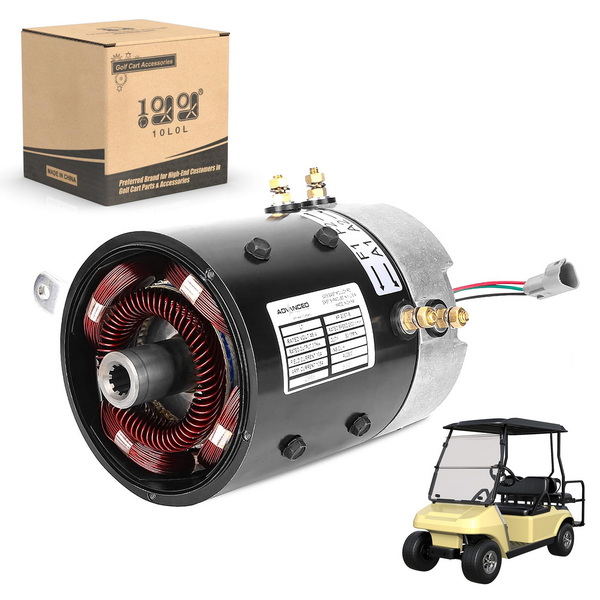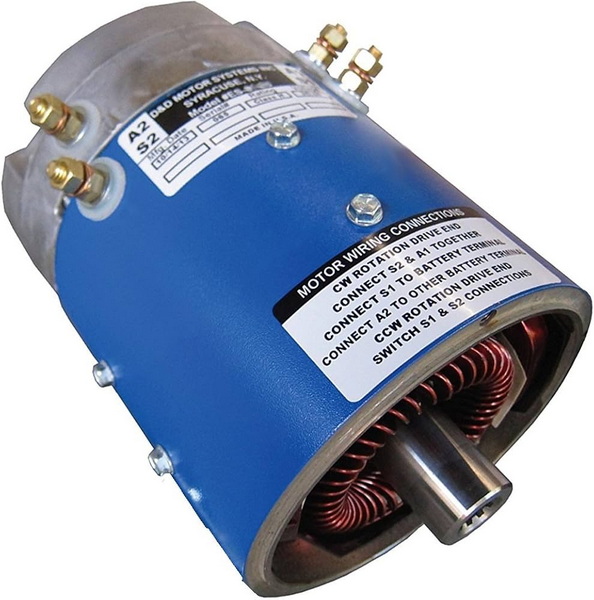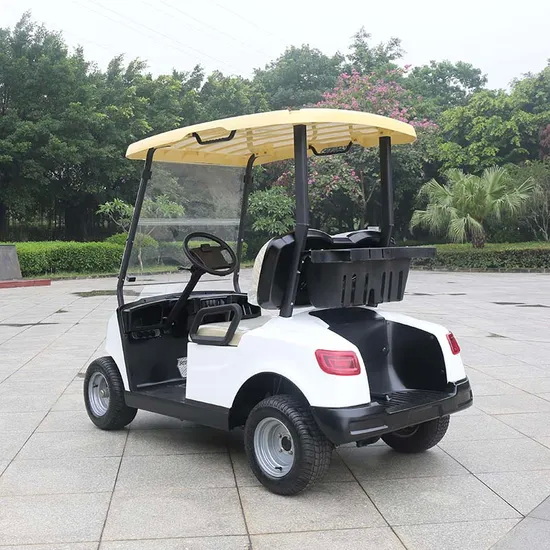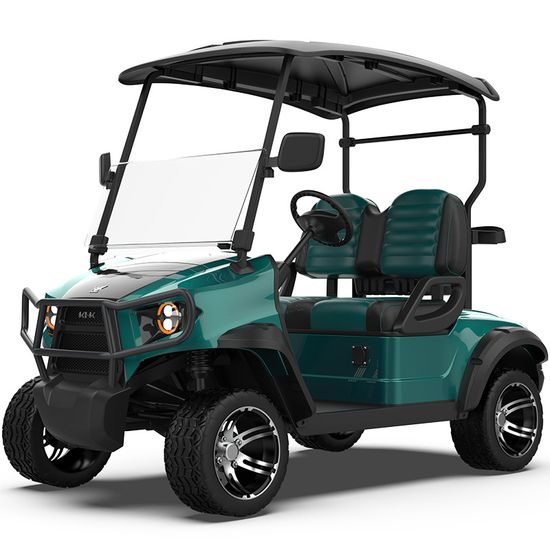Content Menu
● Understanding Electric Motors
>> Power Ratings and Performance
● Factors to Consider When Choosing a Motor Size
>> Intended Use
>> Terrain
>> Desired Speed
>> Battery Compatibility
● Popular Electric Motor Options
● Types of Electric Motors
>> AC Motors
>> DC Motors
● Installation Considerations
● Performance Enhancements
● Understanding Torque vs Speed
● Battery Packs
>> Battery Types
● Charging Your Golf Cart
>> Charging Tips
● Regenerative Braking System
● Conclusion
● FAQ
>> 1. What is the most common size electric motor used in golf carts?
>> 2. Can I install a larger motor without changing my batteries?
>> 3. How fast can I expect my golf cart to go with a performance motor?
>> 4. Is it necessary to upgrade my controller when changing the motor?
>> 5. How do I know if my golf cart is suitable for an upgrade?
When it comes to upgrading or replacing the electric motor in a golf cart, one of the most critical questions is: What size electric motor do you need? The answer depends on various factors, including the intended use of the cart, terrain, desired speed, and torque requirements. This article will explore these considerations in detail, helping you make an informed decision.

Understanding Electric Motors
Electric motors are rated by their power output, typically measured in kilowatts (kW) or horsepower (HP). For golf carts, common motor sizes range from 3 to 11.4 HP, with options for higher performance models.
- 3.5 HP: Suitable for flat terrains and light use.
- 5 HP: Good for moderate hills and regular use.
- 7 HP: Ideal for steeper hills and heavier loads.
- 11.4 HP: Best for off-road conditions and high-speed applications.
Power Ratings and Performance
The power rating of a motor indicates its ability to perform work. Higher ratings usually translate to better performance in terms of speed and torque. For example:
- A 5 kW motor can deliver around 6.7 HP and is often used in standard golf carts.
- Motors rated at 7.5 kW or more can provide significant torque, making them suitable for off-road or hilly terrains.
Factors to Consider When Choosing a Motor Size
When selecting an electric motor for your golf cart, consider the following factors:
Intended Use
- Leisure: If you plan to use your golf cart primarily on flat courses or for short trips, a lower power motor (around 3.5 to 5 HP) may suffice.
- Utility: For tasks like hauling equipment or navigating rough terrain, consider motors with higher power ratings (7 HP or more).
Terrain
- Flat Terrain: A standard 36V or 48V motor around 5 HP is often adequate.
- Hilly Terrain: Opt for motors with at least 7 HP to ensure sufficient torque.
Desired Speed
- Standard golf carts typically reach speeds of 12-15 mph with stock motors. If you want to achieve higher speeds (20 mph or more), consider upgrading to a performance motor (like an 11.4 HP model).
Battery Compatibility
Ensure that your battery system can support the motor's voltage and current requirements. For example:
- A 48V battery system is commonly paired with motors rated at 5 HP or higher.
- A 72V system is ideal for high-performance applications.

Popular Electric Motor Options
Here are some popular electric motors available for golf carts:
- Bandit Motors: Known for their high-speed performance and increased torque.
- D&D Motors: Offers various models catering to different needs, including high torque options.
- Plum Quick Motors: These motors are designed for speed and efficiency, suitable for both standard and lifted carts.
Types of Electric Motors
Electric golf cart motors generally fall into two main categories: AC (Alternating Current) and DC (Direct Current) motors.
AC Motors
AC motors are becoming increasingly popular in modern golf carts due to their efficiency and lower maintenance needs. They provide smoother acceleration and are better suited for heavy-duty applications.
DC Motors
DC motors are widely used in traditional golf carts. They tend to be less expensive but require more maintenance over time. They are known for their high torque characteristics, making them suitable for stop-and-go operations typical in golf courses.
Installation Considerations
Installing a new electric motor can be a straightforward process if you follow these steps:
1. Disconnect the Battery: Always disconnect the battery before starting any work on the cart.
2. Remove the Old Motor: This typically involves unscrewing several bolts and disconnecting wiring harnesses.
3. Install the New Motor: Follow the manufacturer's instructions carefully to ensure proper installation.
4. Reconnect the Battery: Once everything is secured, reconnect the battery and test the motor.
For visual guidance, consider watching installation videos available online that demonstrate step-by-step procedures.
Performance Enhancements
To maximize the performance of your golf cart after upgrading the motor, consider these enhancements:
- Upgrade your controller to match the new motor specifications.
- Use heavy-duty cables to reduce resistance and improve efficiency.
- Consider installing a high-capacity battery pack if you plan on using a high-performance motor.
Understanding Torque vs Speed
When choosing a motor size, it's essential to understand the relationship between torque and speed:
| Feature | Torque | Speed |
| Definition | The rotational force produced by the motor | The rate at which the cart can travel |
| Importance | Critical for climbing hills and carrying loads | Important for achieving higher speeds |
| Motor Type | High torque motors are typically better for utility use | High-speed motors are suited for flat terrains |
High-torque motors are essential if your golf cart will be used primarily for utility purposes, such as towing or navigating steep inclines. Conversely, if speed is your primary concern, opt for a high-speed motor designed for flat terrains.

Battery Packs
Electric golf carts rely on battery packs to store electrical energy. Historically, golf carts used deep-cycle lead-acid batteries. However, most modern electric golf carts use advanced lithium-ion battery packs due to their energy density and longer lifespans.
Battery Types
Lead-Acid Batteries
- Cost-effective but heavier
- Require regular maintenance
- Shorter lifespan compared to lithium-ion batteries
Lithium-Ion Batteries
- Lighter weight
- Longer lifespan
- Faster charging times
- Higher upfront cost but lower long-term costs due to longevity
Choosing the right battery type is crucial as it directly affects your cart's range and performance.
Charging Your Golf Cart
Like all batteries, the golf cart battery pack must also be recharged regularly. Most electric golf carts can be easily plugged into electrical outlets on the golf course or at home.
Charging Tips
- Use a charger compatible with your battery type (lead-acid vs lithium-ion).
- Avoid overcharging; this can damage your batteries over time.
- Regularly check connections and cables for wear and tear.
Regenerative Braking System
Another important component of modern electric golf carts is the regenerative braking system. When you apply brakes, the electric motor acts as a generator that converts some kinetic energy back into electrical energy.
This energy is then sent back to recharge the battery pack, enhancing overall efficiency while extending battery life.
Conclusion
Choosing the right size electric motor for your golf cart involves understanding your needs based on usage, terrain, desired speed, and compatibility with existing systems. Whether you're looking for a simple upgrade or a complete overhaul for performance enhancement, there are numerous options available to suit your requirements.
In summary:
- Assess your usage needs.
- Choose an appropriate power rating based on terrain and speed requirements.
- Ensure compatibility with your battery system.
By taking these factors into account, you can ensure that your golf cart performs optimally and meets your expectations while enjoying an eco-friendly mode of transportation that aligns with modern technological advancements.

FAQ
1. What is the most common size electric motor used in golf carts?
The most common size is between 5 to 7 HP for standard use on flat terrains.
2. Can I install a larger motor without changing my batteries?
No, larger motors often require compatible batteries that can handle higher voltage and current outputs.
3. How fast can I expect my golf cart to go with a performance motor?
With a performance motor (11.4 HP), speeds can reach up to 25 mph or more depending on other modifications.
4. Is it necessary to upgrade my controller when changing the motor?
Yes, upgrading the controller ensures that it matches the specifications of the new motor for optimal performance.
5. How do I know if my golf cart is suitable for an upgrade?
Check your current battery voltage and controller specifications; if they align with higher-rated motors, then an upgrade is feasible.











































